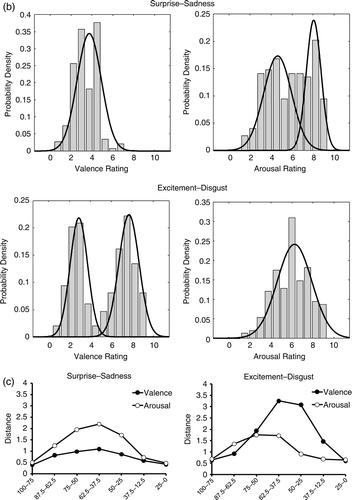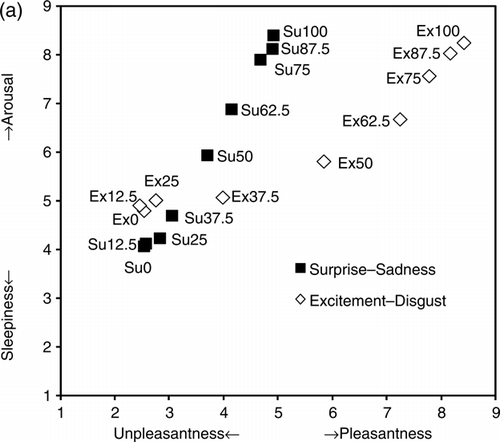Figures & data
Figure 1. Facial stimuli used in this experiment. The original faces were drawn from Ekman and Friesen (1976).
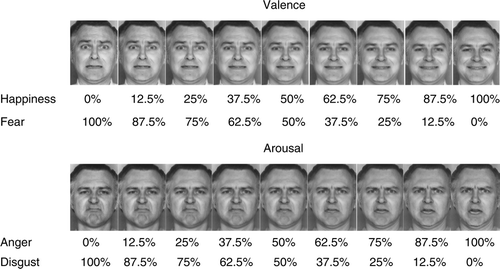
Figure 2. (a) The mean identification rates for the happiness–disgust and anger–disgust continua. These rates show the frequency of the identification of happiness or fear and anger or disgust. Labels along the x-axis indicate the percentage of a particular emotion in facial stimuli. For example, “Ha 87.5” means that happiness represents 87.5% of the face and that fear represents 12.5% of the face. (b) The mean of the observed discrimination rates and the predicted data for each continuum. These rates were based on the frequency of correct responses in the ABX discrimination task. The labels show which facial stimuli were paired. For example, “Ha 50–25” indicates a trial in which happiness 50% and happiness 25% were presented as A and B, respectively.
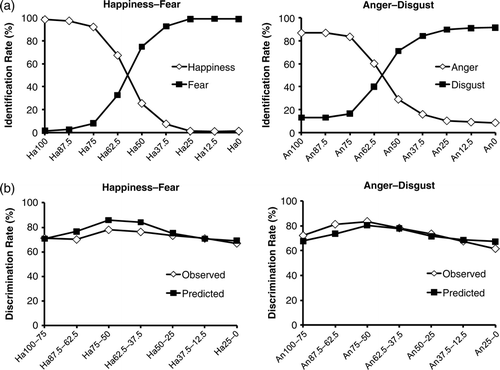
Figure 3. The results for Experiment 1. (a) The mean ratings on the Affect Grid. (b) Histograms showing how frequently each facial stimulus was assigned on a grid for the valence or the arousal scale. The data were obtained from all participants and were averaged for each type of stimulus across all participants. Solid lines show normal distributions. (c) The mean distances between faces using a two-step method of the valence ratings for the happiness–fear continuum and the arousal ratings for the anger–disgust continuum. The label “100–75” refers to the distance between happiness (or anger) 100% and happiness (or anger) 75%, respectively, on valence or arousal ratings.
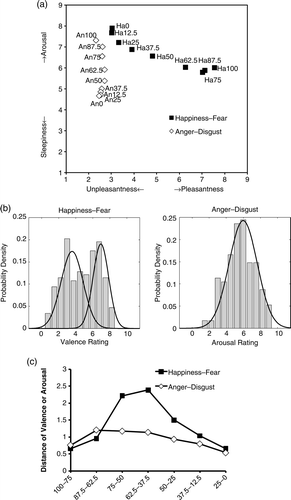
Figure 4b. (b) Histograms showing how frequently each facial stimulus was assigned on a grid for the valence and the arousal scale. The upper panels show the distribution of data for the surprise–sadness continuum. The lower panels show the data for the excitement–disgust continuum. Solid lines show normal distributions. (c) The mean distances between two-step faces in terms of the valence and arousal ratings. The label “100–75” refers to the distance between surprise (or excitement) 100% and surprise (or excitement) 75% in valence or arousal ratings.
